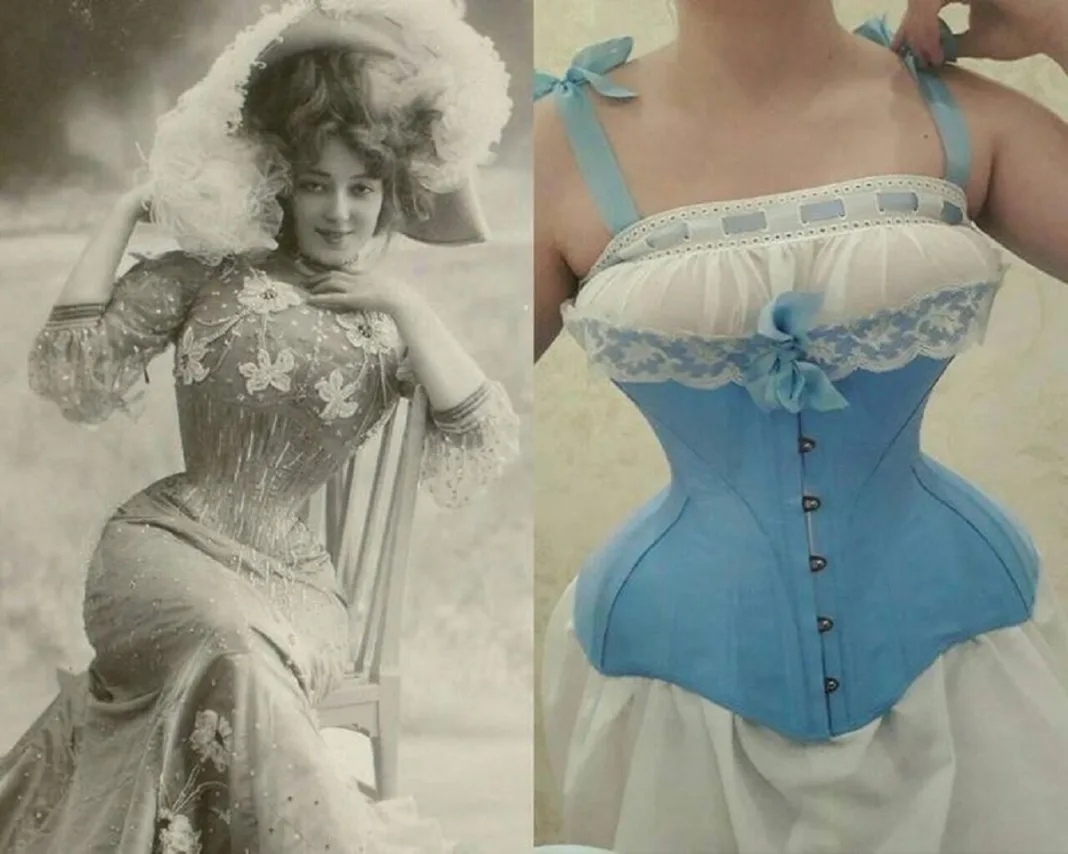When we look back at history, fashion has always been more than simply apparel. It has been a narrative of how society valued beauty, how women expressed themselves, and how trends shaped generations. Few items demonstrate this more than the Edwardian corsets. Worn in the early 1900s, these corsets revolutionized not just the contour of women’s bodies but also the whole direction of style and femininity in the Edwardian period.
If you have ever wondered how corsets developed over time, or why the Edwardian corset is still spoken about by fashion historians, designers, and collectors, this article takes you deep into its story. From its conception to its effect on daily attire, let us study how the Edwardian corset altered women’s fashion forever.
What Exactly Was the Edwardian Corset
The Edwardian corset was distinct from the Victorian corset that came before it. While Victorian corsets frequently concentrated on compressing the waist into dramatic hourglass proportions, the Edwardian corset generated a very specific profile dubbed the S-bend shape.
This design pulled the chest forward and the hips backward, twisting the spine in a manner that appeared beautiful and extended. The waist seemed thin but not too tightened. Women of the period considered this as contemporary, stylish, and even more pleasant compared to the harsher corsets of the 1800s.
Made with lighter materials, strengthened by steel or whalebone, and typically embellished with lace or ribbons, the Edwardian corset was both a functional foundation garment and a piece of beauty in itself. Fashion periodicals of the early 20th century commended it as vital for every elegant woman.
The Rise of the S-Bend Silhouette
The primary contribution of the Edwardian corset was the emergence of the classic S-bend or pigeon-breast form. When worn, the corset tilted the pelvis slightly back and pulled the chest outward, producing a proud and erect attitude.
This look fit wonderfully with the attire of the period. Dresses of the Edwardian period included high necklines, puffed sleeves, and voluminous skirts. The corset below complemented this style by producing a feminine shape that was voluptuous but sophisticated. In pictures from the early 1900s, you can plainly discern this trendy shape. It gave ladies a posture that seemed beautiful, even royal, which complemented the standards of Edwardian beauty.
Comfort and Criticism
It may surprise some people, but many ladies actually considered the Edwardian corset more comfortable than the Victorian form. Because it did not need such dramatic waist reduction, ladies could breathe more readily and move with less constraint. The longer length of the corset also offered support for the back and hips.
Of course, not everyone agreed. Health reformers of the period opposed corsets in general, stating that they deformed the body and hindered natural mobility. Doctors worry about postural difficulties or organ pressure. Despite these problems, the popularity of the Edwardian corset grew, particularly among the middle and upper classes who considered it as a badge of sophistication.
Influence on Women’s Daily Fashion
The Edwardian corset was not only a concealed garment. Its impacts affected the way dresses, blouses, and skirts were created. Tailors and dressmakers cut clothing to meet the S-bend silhouette. For example, blouses were generally bigger in the chest region to highlight the pigeon-breast aspect, while skirts flared out somewhat to counteract the backward tilt of the hips.
Even accessories showed this trend. Belts and sashes were raised higher, gloves stretched to prolong the arms, and hats got bigger to offset the wider chest and smaller waist. The corset was actually the basis of the Edwardian appearance, and without it, the trendy designs of the period would not have worked in the same manner.
The Symbol of Femininity
In Edwardian culture, a woman’s corset meant more than fashion. It was related to ideas of gender, social prestige, and elegance. Women wore corsets for special events like afternoon teas, garden parties, and formal dances. Young ladies moving into society frequently got their first corset as part of growing up, symbolizing their passage into maturity.
The Edwardian corset highlighted natural curves rather than merely narrow waists, which represented altering ideals regarding beauty. Women were considered as elegant, delicate, and feminine, but also active and sociable. The Edwardian era was a time of transformation, and the corset reflected similar developments in society.
The Decline of the Edwardian Corset
By the time World War I began in 1914, the Edwardian corset started to decrease in favor. Women’s responsibilities altered considerably when women joined the labor in bigger numbers and required more practical attire. Movement, mobility, and independence were more significant than strict fashion norms.
Fashion designers like Paul Poiret also played a role by designing new garment designs that did not need corsets at all. The straight, column-like profile of the 1920s rendered the dramatic S-bend figure superfluous. Gradually, corsets were replaced with lighter undergarments such as brassieres and girdles.
Still, the Edwardian corset left a powerful impact. Its impact on the female physique and the general design of fashion throughout that period remains indelible.
Why Edwardian Corsets Still Fascinate Us Today
Even now, collectors, costume designers, and fashion fans are attracted with Edwardian corsets. They appear in period plays, theater performances, and historical reenactments. Museums show them as examples of great workmanship, generally with delicate stitching and gorgeous lace accents.
Many current designers take influence from the corset as well. Haute couture design regularly reimagines corsets in bold and inventive ways, paying tribute to their historic importance while modifying them for modern style. For other individuals, wearing a corset now is also a means of connecting with the past, experiencing the elegance and posture that ladies of almost a century ago once experienced.
The Enduring Legacy
The Edwardian corset did not merely modify women’s proportions, it transformed fashion itself. It spanned the gap between the conservative Victorian period and the freer trends of the 1920s. It represented how women were perceived, how they desired to be seen, and how society regarded beauty at the time.
When we think about its influence, it is evident the corset was more than fabric and boning. It was a cultural emblem, an artistic work, and a cornerstone of Edwardian fashion design. Even as trends change, its legacy remains stitched into the history of women’s style.
Final Thoughts
Fashion is often judged by what it reveals, but just as often, it is defined by what lies underneath. The Edwardian corset is a perfect example of this truth. It was hidden beneath dresses, yet it dictated the way women looked, moved, and even felt about themselves.
Whether admired for its elegance, criticized for its restrictions, or remembered for its craftsmanship, the Edwardian corset stands out as a garment that reshaped women’s fashion in the truest sense. It remains a reminder that style is never just about clothing. It is about history, society, and the constant dance between comfort, beauty, and identity.




